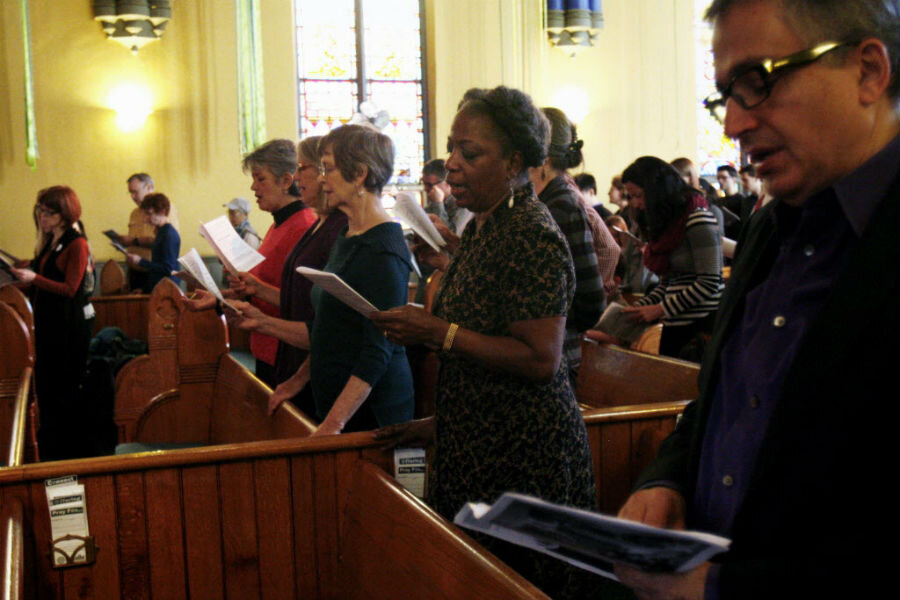Paying it forward: Chicago church gives congregants $500 to do good
Loading...
When a real-estate deal netted Chicago's LaSalle Street Church $1.6 million, Pastor Laura Truax made an unusual announcement: 10 percent of that money – the size of a typical tithe – would be divided among about 320 regular churchgoers. Each would get a $500 check to do something positive.
Kristin Hu knew early on what she wanted to do.
Ms. Hu, a high school teacher, wanted to help "Dreamers" – young immigrants brought to the United States illegally as children and raised here. She had been inspired by Lucy, a Mexican-born student in her class, who gave an impassioned speech about how she and other Dreamers are unable to attend college because their immigration status means they don't qualify for financial aid.
Hu plans to give her money to a Dreamer organization or to start a scholarship foundation for the kids.
The LaSalle Street Church's generosity is emblematic of acts of charity that go on nationwide as the holiday season approaches. As America rebounds from the Great Recession, there are signs that charitable giving is rebounding, too. For now, however, the uptick remains small, and the donations are predominantly coming from wealthy individuals.
For many congregants of LaSalle Street Church, these donations would not have been possible without the help of the checks.
Ms. Truax announced the church's plan in September, and while members like Hu had specific causes in mind, others weren't so sure. Rosemary Baker was so conflicted about how to use her money that she stashed it under a book at home while she tried to make up her mind.
"It felt like just such a big burden to do the right thing," she told the Associated Press.
Like many church members, Ms. Baker and her husband, Erik, first looked to large charitable organizations, but they eventually decided to put the money to use much closer to home. They gave their $1,000 to two friends – one struggling to pay the bills after paying for her grandmother's funeral, and another who was trying to support his family after recently losing his marketing job.
At first, the couple thought a local donation "might be too small," but she later described the personal gifts as "powerful."
"[To] be part of that moment and see that the impacts of seemingly small gestures were huge," she said.
Overall, the United States has seen a slight increase in charitable giving this holiday season, according to the Blackbaud Index, which tracks charitable giving rates in the United States and Canada. The uptick in giving is sign that Americans are starting to give more as the national economy recovers.
Donations to charity increased 1.8 percent over the months of July through September from the same time period in 2013, according to the Index. Last year was also the first year the country experienced an increase in donations since 2008.
The slight upward trend bodes well for the holiday season, Steve MacLauglin, director of product management for Blackbaud, told USA Today.
About 34 percent of all charitable giving is done in the last three months of the year, with about 18 percent of those donations made in December alone, he added.
But the recent surge in charitable giving appears to be coming mostly from the rich, as the middle and lower class are taking longer to recover from the recession. The average household donation of the middle class and poor has declined in recent years from $1,156 in 2006 to $977 in 2012, John Havens, associate director of the Center on Wealth and Philanthropy at Boston College, told the Monitor last week.
"These folks really have not recovered from the recession," Mr. Havens said.
This report contains material from The Associated Press.








